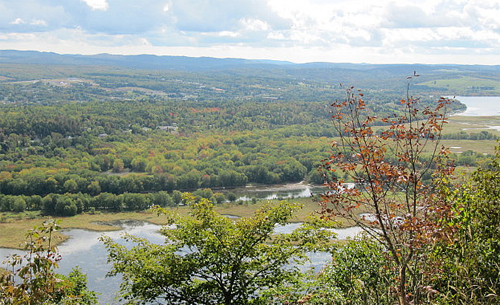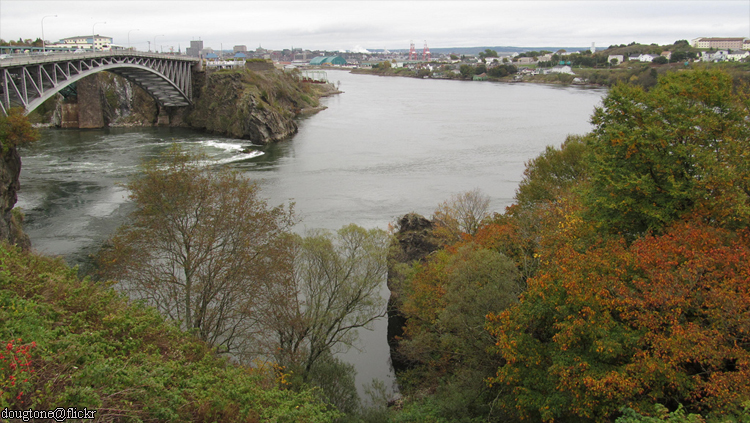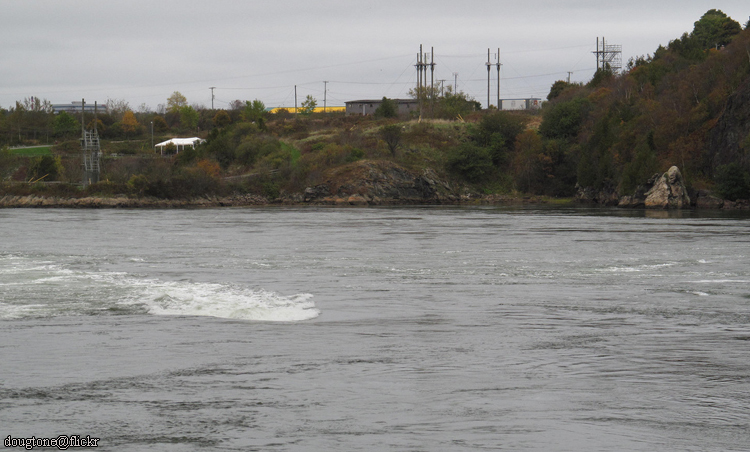Saint Croix Highlands
|
Areas Page Editors: please follow the Guidelines, whether you are editing an in-game area or World Territory. |
On this page... (hide)
- 1. Description
- 2. Subterritories
- 2.1 Cape Hopewell
- 2.2 Saint John
- 3. Waterways
- 4. History
| Credit | wallygrom@Flickr |
|
General | |
| Region | Western Forefront |
| Subterritories | Cape Hopewell |
| Major Waterways | Bay of Fundy |
| Size | ?? sq km / ?? sq mi |
|
Roleplay! | |
1. Description
The Saint Croix Highlands are rocky and mountainous, as the name suggests. Sparsely forested, this hilly land was unsuitable for farming or livestock pursuits; most of the construction in this area took place in the last century of humanity's reign. Thus, the buildings have begun to fall to ruin faster than those of older construction. Many small suburban towns have been overtaken by wilderness -- shrubs and other small plants force their way through cement and asphalt, and wooden houses come toppling down to earth.
2. Subterritories
2.1 Cape Hopewell
Cape Hopewell is home to a variety of unique geological formations. Large boulders dot the shoreline, often found in sea stacks and other odd formations -- sheer drops and raised beaches are the norm. As any other along the Bay of Fundy, this area boasts an extremely varied tide. Hopewell Cape in particular, however, boasts some of the highest average tidal ranges in the world; the high tide can rise as much as 16 metres (52 ft). During low tide, there is plenty of beach and numerous tidal pools; however, during the high tide, the water comes to the cliff's edge.
In the autumn of 2022, Cape Hopewell was destroyed by localized earthquakes and landmass merging as the broken-off southern peninsula of Nova Scotia made contact with the mainland. The Scar? marked where the cape once stood.
2.2 Saint John
Although Halifax is larger than Saint John, this coastal city is as impressive, boasting tall buildings and a once-bustling metropolis. Like the Nova Scotian city, Saint John is also situated on a harbor. Many buildings closest to the shoreline are in the worst disrepair; a few have fallen into the harbor entirely. Inland construction is more secure, but all show wear and signs of nature's march forward.
Four distinctive neighborhoods form Saint John city: residential, retail (Central, East, West), commercial (East, West), and working class (East, South). In general, Saint John is in worse shape than Halifax, primarily due to the colder and harsher climate of mainland Canada. Still, many of the brick and stone buildings still stand tall, built strong to last long.
Saint John has a low level of both flora and fauna. Though plants and trees have begun to overtake parts of the city, it is certainly not thick, untouched wilderness. Some parks do support small populations of Deer and sometimes even larger ungulates; Rodents and small mammals, as well as birds, are plentiful. Nonetheless, Saint John lacks enough prey to support a Luperci pack.
3. Waterways
Saint John River
This huge river trails across the easternmost section the Western Forefront territories, creating the border between this region and its neighbor, the Northern Tides. Saint John River is fed by a large number of smaller rivers, streams, and creeks -- even the larger Miramichi contributes to its outflow. In the lower sections in the broad floodplain around Saint John, flooding may occur during late spring from the sheer volume of water which must make its way through the narrow gorge at the Reversing Falls.
Reversing Falls
The tidal inflow in the Bay of Fundy forces the flow of water in the Saint John river against the downstream river current. In the spring freshet, however, the Bay's tides are frequently overpowered by the downstream volume of water -- thus, the "reversing" of the Reversing Falls does not always occur. The rapids, or "falls", are created by a series of underwater ledges which roil the water in either direction. These rocks are a significant navigation hazard, despite the depth of water.
4. History
- Prior to the board expansion in April 2017, Saint Croix Highlands used to be part of the Northern Tides region.



